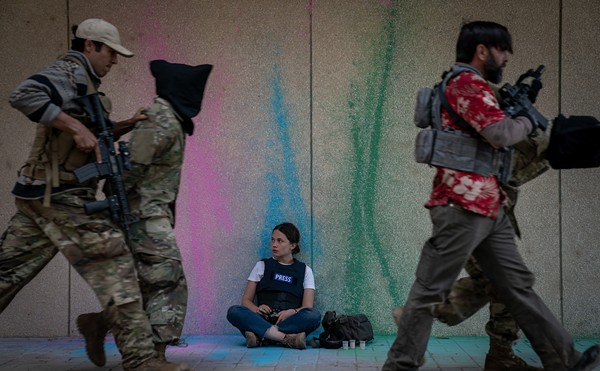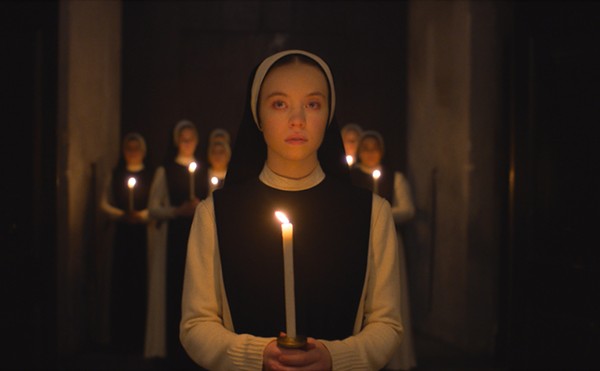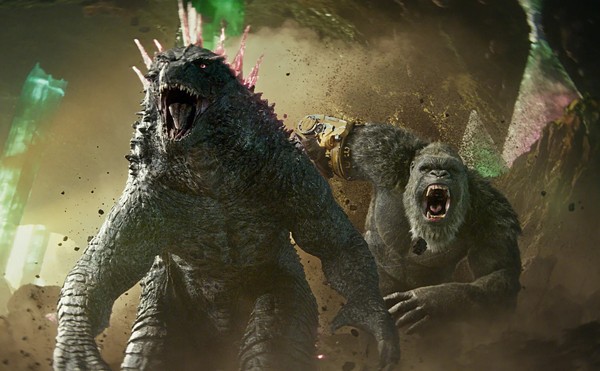When it was released in Japan in 1997, Princess Mononoke became the country's second-highest-grossing film ever (behind, of course, that American trifle about the big ship and the iceberg) and won Japan's equivalent of the Oscar for Best Picture. Pixar's John Lasseter, director of Toy Story and A Bug's Life, is an admirer of the film, and directors as diverse as Tsui Hark, Guillermo del Toro (Mimic) and the late Akira Kurosawa have weighed in as Miyazaki fans.
Yet, although Mononoke is often gorgeous to look at and has a far more sophisticated story than most Japanese animated features, it still feels overlong and dramatically unengaging, at least in its American incarnation. (Some of this may be the fault of the English-language casting and direction.) Miyazaki sold the American rights only on the condition that the film not be cut. Although in principle this demand deserves our support -- and Miramax deserves credit for agreeing to it -- the film, let us point out, clocks in at more than two-and-a-quarter hours.
Mononoke opens with a beautiful shot of cloud-enshrouded mountains before panning down to a Japanese forest circa 1550. A peaceful, secluded village is suddenly threatened by what appears to be an oversized plate of fettuccine but is eventually revealed to be a giant boar. Our hero, young tribal prince Ashitaka (Billy Crudup), kills it but discovers to his dismay that it is actually a forest god. The boar had been shot -- firearms have only recently been introduced to Japan -- and the bullet in its body has transformed it into a demon. In medical terms, it seems to be in the grip of a septic delirium. Ashitaka may have had no real choice, but killing a god nonetheless carries a stiff penalty. The struggle has left him with an ugly wound on his arm -- a wound that is sure to spread to his whole body and kill him before his time. The local sage says that Ashitaka is doomed, but the lad decides to give his life some meaning by discovering the story behind the demon.
Ashitaka mounts his faithful white elk and wanders to Iron Town, where the seemingly progressive Lady Eboshi (Minnie Driver) has built a foundry and given work to scores of former prostitutes. He rescues one of the male workers from an attack by wolves led by San (Claire Danes), a.k.a. Princess Mononoke, an agile teenager who, we later learn, was raised by ancient she-wolf Moro (Gillian Anderson).
Here is where the story begins to get complicated: Ashitaka realizes that it was Lady Eboshi who both manufactured and shot the bullet that turned the boar-god into a demon. The lines between the good guys and the bad guys begin to grow blurrier and blurrier. Should he be helping Lady Eboshi, who acts in defense of the decent, hardworking people of Iron Town? Or the forest creatures, who are being shot by those same people and whose longtime home is being stripped bare to provide fuel for the town and its ironworks?
If that weren't tricky enough, there are other interests at work: The canny Jigo (Billy Bob Thornton) is working for yet another tribal lord, who has commissioned him to bring back the head of the Forest Spirit -- the greatest of the forest gods -- who, after sunset, morphs into a gigantic creature called the Night Walker. The Forest Spirit is a gentle, benevolent deity, but his noggin is rumored to confer immortality to its possessor.
By definition, the ambiguous moral setup is more subtle than many anime features, which tend to involve great showdowns between clearly defined forces of Good and Evil. If the themes here are reasonably adult, however, the story is still fairytale-like -- which is to say, a tad too juvenile for most adult viewers. (And it should be noted that the movie includes violence that may be too strong for younger children: Heads and limbs are graphically torn off.)
One of the greatest weaknesses in much of anime is its character animation. In many features, most of the characters have nearly identical bland, triangular faces; and the range of facial expression is so limited as to make the movements of South Park's paper-cutout heads look positively sophisticated. Nothing in Princess Mononoke contradicts this view. Ashitaka and the others are practically stone-faced, whereas the design of the creatures and gods doesn't lend itself to facial mobility. The least effective of all are the "cute" little tree demons, little globular mutants who look like a cross between Poppin' Fresh and the baby from Eraserhead (thus stimulating your appetite and squelching it, simultaneously).
One of anime's main contributions to modern animation has been its willingness to experiment visually, which has helped open up the language of the art. Yet Miyazaki's visual style here is far from radical; if anything, it's strikingly conservative, even stodgy at times. There are occasional backgrounds and panoramic establishing shots that take your breath away, but, perhaps to stay within the traditional style of period epics, Miyazaki has "staged" and "shot" -- if those terms can be applied to animation -- the action with straight-on master shots and conventional angles and cutting. The extreme camera angles and lighting that distinguish anime from its American counterparts are nowhere to be seen.
If anything, Miyazaki is more interesting in his use of sound than his visuals. Rather than fill the soundtrack with wall-to-wall bombast, he acknowledges the effectiveness of moments of silence, both for contrast and to convey foreboding. When epic music is employed, composer Joe Hisaishi's score contributes greatly to the action.
Finally, Miyazaki cannot be faulted for some missteps in the casting. Danes is a fine young actress, but her voice is horribly out of place: Mononoke sounds like a whiny suburban teenager. And Thornton's mountain twang seems a bit odd in the context. Crudup and Driver fare better, with the latter actually providing Eboshi with the sense of character that the visuals sadly lack.
Opens Nov. 5 at the Plaza Frontenac.





